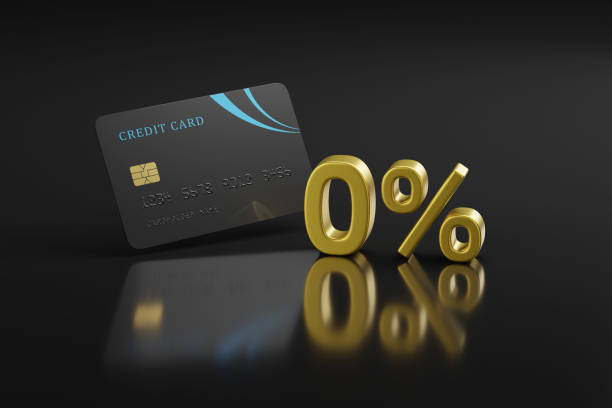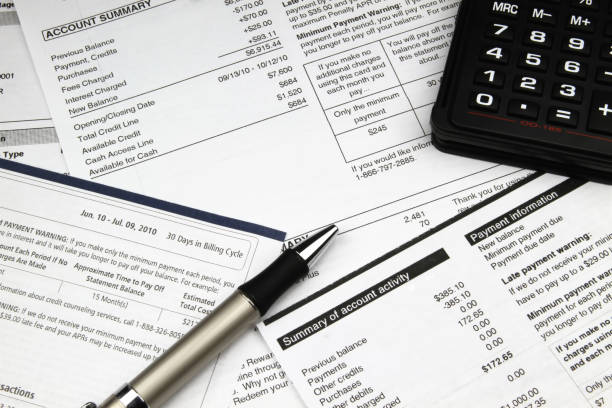Credit Tip Tuesday #138-Credit Card Interest Rates: What You Need To Know

Image Credits: iStock
Hey there! We have all been there – standing at the checkout counter, contemplating whether to swipe that shiny piece of plastic.
Credit cards have become indispensable to our financial lives, offering convenience, rewards, and endless possibilities. But lurking beneath their enticing features lies a topic that is often misunderstood and can potentially sneak up on your wallet: credit card interest rates.
In this blog, we will unravel the mysteries of credit card interest rates. We will break down the ins and outs and help you confidently navigate the world of credit cards.
Let's talk about credit card interest rates, secured credit cards, APRs, and everything in between.
The Basics: What Is Credit Card Interest?
Alright, let's start at square one.
Credit card interest is the cost of borrowing money from your credit card issuer. When you make purchases with your credit card and do not pay off the entire balance by the due date, you will be charged interest on the remaining balance.
Credit card interest rates are typically expressed as an annual percentage rate (APR). This APR represents the yearly cost of borrowing money on your card. It is important to note that credit card interest rates can vary significantly from one card to another, so it is crucial to understand the terms of your specific credit card.
Different Types Of Credit Card Interest Rates
Credit card interest rates are not one-size-fits-all. In general, you will encounter several types of interest rates:

Image Credits: iStock
● Purchase APR (Annual Percentage Rate)
When you consider using your credit card for everyday purchases, the Purchase APR is the interest rate you will want to pay attention to. It is the rate applied to the balance you carry from one billing cycle to the next after making purchases.
This interest rate can vary widely, depending on the type of credit card you have and your creditworthiness. A lower Purchase APR can be a money-saver, especially if you occasionally carry a balance. However, remember that paying off your balance by the due date will allow you to avoid incurring interest charges.
● Cash Advance APR
Cash advances can be a quick solution when you need cash, but they come at a cost – the Cash Advance APR. This interest rate is typically higher than the Purchase APR and starts accruing immediately when you withdraw cash from an ATM using your credit card.
It is also applied when you engage in cash-equivalent transactions, such as buying casino chips or using your credit card for gambling. Avoid cash advances whenever possible, as the high-interest rate and lack of a grace period can lead to expensive debt.
● Promotional APR
Promotional APRs are the unicorns of the credit card world, offering temporary respite from high-interest charges. Credit card issuers use promotional APRs as incentives to attract new customers or encourage balance transfers.
These special rates can come in various forms:
- 0% Introductory APR: This type of promotion offers a 0% interest rate on purchases or balance transfers for a specified period, often ranging from 6 to 18 months. It is an excellent opportunity to make large purchases or pay down existing debt without accruing interest.
- Low Fixed APR: Some cards may offer a fixed, reduced interest rate on specific types of transactions for a set period. For instance, you might get a 3.99% fixed APR on balance transfers for six months.
- Deferred Interest: Sometimes, you will see promotions where the interest is deferred rather than waived. Be cautious with these offers because if you do not pay off the balance in full by the end of the promotional period, you could be hit with retroactive interest charges.
Different Credit Cards, Different Rates
Not all credit cards are created equal, which also applies to interest rates. The specific rate you will get depends on your credit card type, your credit history, and the credit card issuer. Here are a few types of credit cards and how their interest rates may vary:

Image Credits: iStock
● Standard Credit Cards
These are your everyday, run-of-the-mill credit cards. They typically come with a lower interest rate than other credit card types. You might qualify for a lower APR on these cards if you have good credit.
● Rewards Credit Cards
Rewards cards often offer enticing perks like cash back, travel rewards, or points for every dollar you spend. However, they usually come with a higher interest rate. So, if you plan to use a rewards card, make sure you can pay off your balance in full each month to avoid those hefty interest charges.
● Balance Transfer Credit Cards
These cards are designed to help you consolidate and pay down existing credit card debt by offering a low or even 0% interest rate on balance transfers for a specified period. Remember that the interest rate can shoot up once the promotional period ends.
● Student Credit Cards
Geared toward students and those with limited credit histories, these cards often have lower interest rates. They can be a great way to build credit, but do not let that tempt you into overspending.
● Secured Credit Cards
Secured credit cards require a security deposit and are generally easier to obtain if you have bad or no credit. The interest rates can vary, but they are often higher to offset the risk for the issuer.
● How Credit Card Interest Is Calculated
Now, let's get into the nitty-gritty of how credit card interest is calculated. Most credit card issuers use a method called the Daily Balance Method, which includes the following steps:

Image Credits: iStock
● Daily Balance
Your credit card issuer will calculate your daily balance by adding up your outstanding balance at the end of each day. They will divide this by the days in your billing cycle to get the average daily balance.
● Daily Rate
To find the daily interest rate, your credit card issuer will divide your annual interest rate (APR) by 365 (or 360, depending on the issuer). This gives them the daily rate at which your balance will accrue interest.
● Daily Interest Charge
Multiply your average daily balance by the daily interest rate, and you get your daily interest charge.
● Monthly Interest Charge
To calculate your monthly interest charge, your issuer will sum up the daily interest charges for the entire billing cycle.
It is important to note that most credit cards offer a grace period, usually around 21 days. If you pay your balance in full during this period, you will not incur any interest charges on your purchases.
The Impact Of Credit Card Interest
Credit card interest rates can significantly impact your financial well-being if you are not careful. Let's break down some of the key things you should know:

Image Credits: iStock
● Compound Interest
One thing that can catch many people off guard is the power of compound interest. When you do not pay your balance in full, you accrue interest on your original balance and any interest that has already been added. This can lead to your debt growing much faster than you might expect.
● Minimum Payments
Credit card issuers typically require you to make a minimum monthly payment, usually a small percentage of your outstanding balance. While this might seem convenient to manage your debt, it can keep you in debt for a long time. If you only make minimum payments, you will pay more interest over time.
● Credit Score Impact
Failing to manage your credit card debt and making late payments can negatively impact your credit score. A lower credit score can make it more challenging to get approved for loans, mortgages, or even other credit cards in the future.
Tips For Managing Credit Card Interest
Now that you understand the ins and outs of credit card interest rates, here are some practical tips to help you manage your credit card debt effectively:

Image Credits: iStock
● Pay Your Balance In Full
The best way to avoid paying credit card interest is to pay your balance in full each month. This way, you will enjoy the benefits of your credit card without the added interest cost.
● Set Up Automatic Payments
To ensure you never miss a payment, set up automatic payments for at least the minimum amount due. This will help you avoid late fees and maintain your credit score.
● Shop Around For Low-Interest Cards
If you tend to carry a balance, consider shopping for credit cards with lower interest rates. Some cards offer promotional rates with 0% interest for a limited time.
● Use Balance Transfer Offers Wisely
Some credit cards offer balance transfer promotions that allow you to transfer your balance from a high-interest card to one with a lower interest rate. Be sure to read the terms and understand any associated fees before making a transfer.
● Create A Budget
Having a budget can help you manage your spending and avoid accumulating debt. It is a powerful tool for financial control.
Final Takeaway
Alright, friends, here is the scoop – credit card interest rates do not have to be the boogeyman in your financial closet. With the knowledge you have gained, remember the golden rule: pay your balance in full, dodge cash advances like the plague, and keep an eye on those promos. Be a savvy credit card user, and you will enjoy the perks without the pitfalls.
Now, here is the deal: Knowledge is power. Understand those interest rates, monitor your balance, and pay your bills promptly. And if you are looking to build your credit, consider a secured credit card as your trusty sidekick on this financial journey.
Your financial future? It is in your hands!


